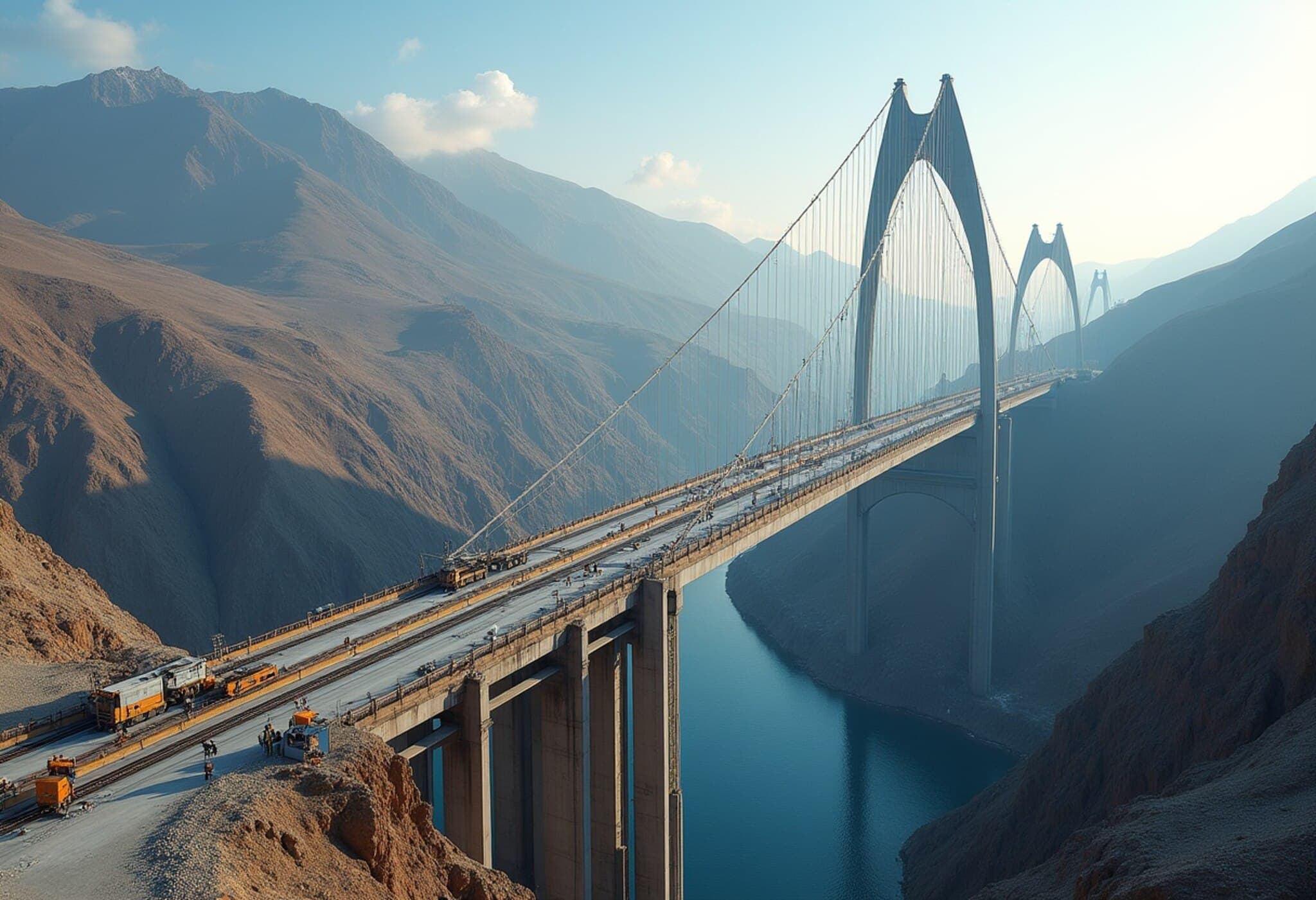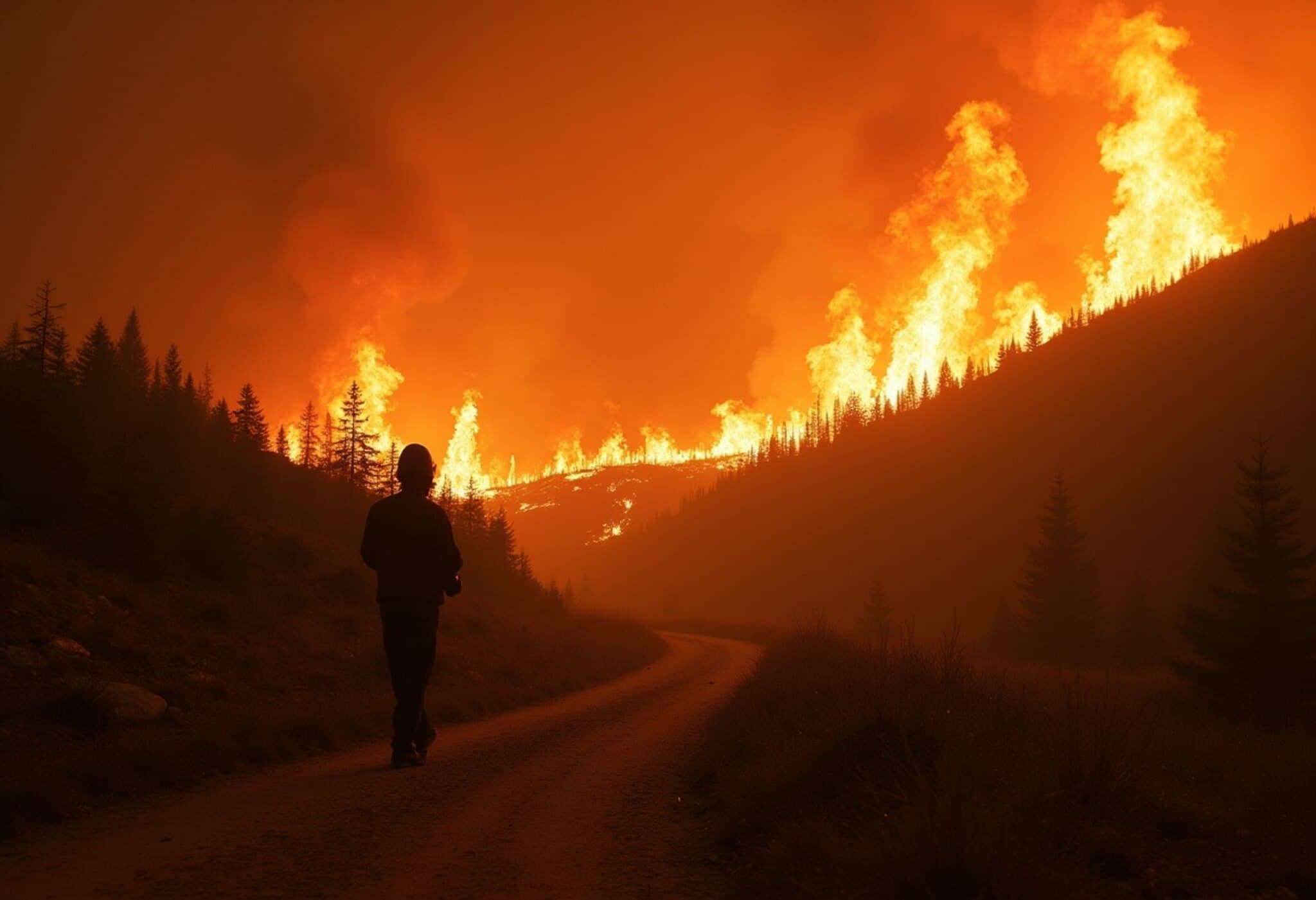Deadly Bridge Collapse Rocks Northwest China
In a devastating incident early Friday morning, a partially constructed railway bridge spanning the Yellow River in Qinghai province, northwest China, collapsed during a tensioning operation, killing at least 12 workers and leaving four others missing. The accident, reported at around 3 a.m., has sent shockwaves through the region and highlights the inherent risks associated with large infrastructure projects.
Details of the Collapse
The bridge, notable for its striking aquamarine-colored arch, was still under construction when a steel cable snapped suddenly, triggering the catastrophic failure of a significant section of the arch. Official images from Xinhua News Agency depict the twisted remains of the bridge deck hanging perilously above the river’s surface, illustrating the scale of the structural damage.
Rescue Efforts Underway
At the time of the collapse, sixteen workers were present on-site. Rescue teams swiftly mobilized, deploying boats, helicopters, and underwater robotic devices to search for survivors and recover those missing. Several bodies have been recovered so far, but rescue operations continue amid challenging conditions.
Understanding the Project and Its Risks
The bridge, extending 1.6 kilometers in length with a deck approximately 55 meters above the river, is a critical segment of China’s expanding railway infrastructure network aimed at better connecting remote regions. However, the accident underscores the complex technical and safety challenges involved in such ambitious engineering endeavors.
Expert Insights and Broader Context
Accidents like this raise pressing questions regarding construction safety standards and oversight in rapidly developing infrastructure sectors. According to industry experts, tensioning operations — which involve adjusting and reinforcing cables to ensure structural stability — are among the most delicate phases of bridge construction and require stringent safeguards.
China’s rapid pace of infrastructure growth, especially in remote and mountainous regions such as Qinghai, has often been lauded for driving economic development but also criticized for occasionally compromising worker safety in the pursuit of deadlines.
Regional and Global Implications
- As China continues investing heavily in infrastructure under initiatives like the Belt and Road Initiative, maintaining robust safety and quality control measures is critical to prevent such tragedies.
- The incident has drawn attention to the need for enhanced training, emergency preparedness, and technological innovation to mitigate risks in large-scale construction.
- Environmental considerations also come into play when disasters affect major ecosystems like the Yellow River basin, which supports millions of people.
Community Impact and Moving Forward
For families of the victims and local communities, the incident is a heartbreaking reminder of the human cost behind infrastructure development. It also highlights the vital role of transparent investigation processes and accountability mechanisms to honor the lives lost and prevent future accidents.
Editor’s Note
This tragic collapse along the Yellow River not only marks a somber chapter for Qinghai's construction industry but also invites a broader discussion about balancing rapid infrastructure growth with uncompromising safety protocols. As China continues to modernize its transportation networks, the world watches closely – underscoring the universal imperative to protect the workers who build the backbone of our connectivity.











